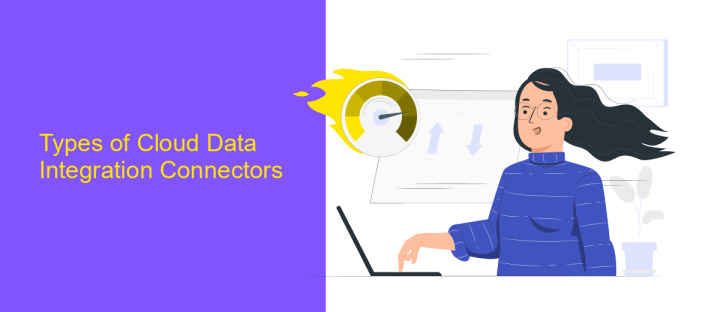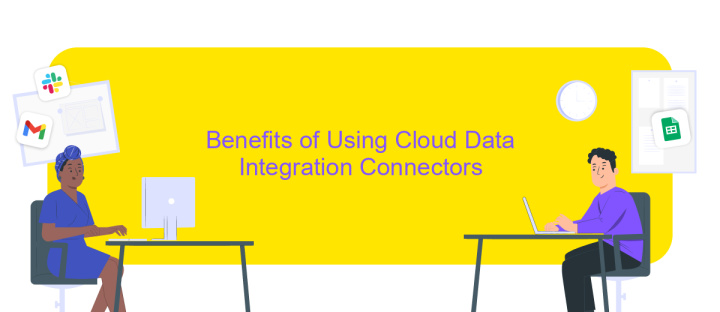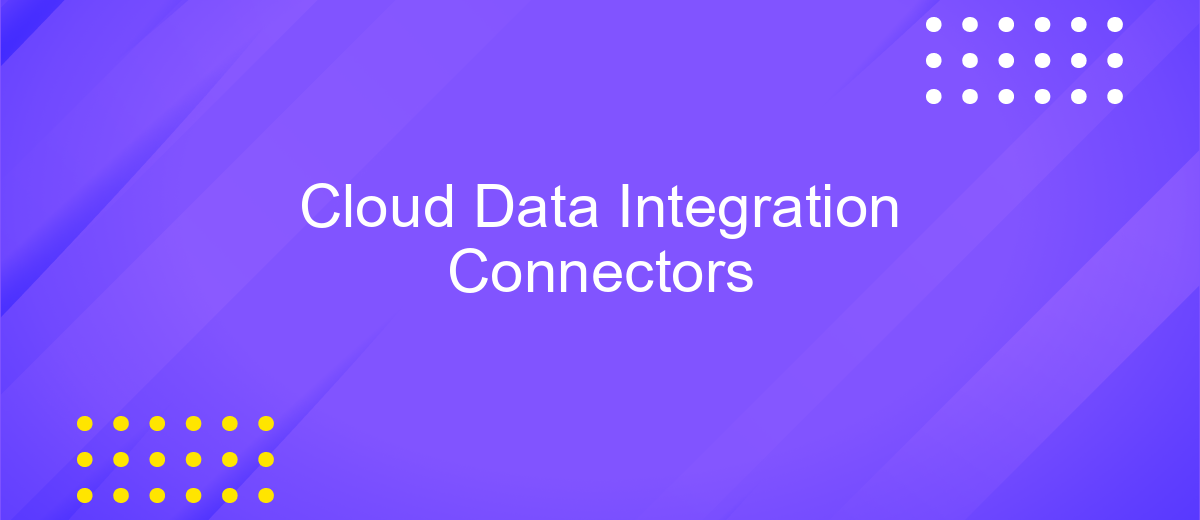Cloud Data Integration Connectors
Cloud Data Integration Connectors play a crucial role in today's digital landscape by seamlessly linking diverse data sources and applications. These connectors enable businesses to efficiently manage, synchronize, and analyze data across various cloud platforms, ensuring real-time access and improved decision-making. As organizations increasingly rely on cloud technologies, understanding and leveraging these connectors becomes essential for maintaining competitive advantage and fostering innovation in data management strategies.
Introduction to Cloud Data Integration Connectors
Cloud data integration connectors are essential tools in modern data management, enabling seamless data flow between disparate cloud-based systems and applications. As businesses increasingly rely on cloud services for their operations, the ability to integrate data from various sources becomes critical for maintaining efficiency and gaining insights. These connectors facilitate the movement of data, ensuring that it is synchronized, accessible, and ready for analysis or further processing.
- Enable seamless data transfer between cloud applications.
- Support various data formats and protocols.
- Enhance data accessibility and synchronization.
- Reduce manual data handling and errors.
- Facilitate real-time data processing and analytics.
By leveraging cloud data integration connectors, organizations can overcome the challenges associated with data silos and fragmented information. These connectors provide a streamlined approach to data management, allowing for improved collaboration and decision-making. As technology continues to evolve, the role of cloud data integration connectors will become even more pivotal, supporting the growing demand for agile and scalable data solutions across industries.
Types of Cloud Data Integration Connectors

Cloud data integration connectors are essential tools that facilitate seamless data exchange between various cloud-based applications and services. These connectors come in various types, each designed to address specific integration needs. API-based connectors are among the most common, enabling direct communication between applications through their APIs. They provide real-time data transfer and are ideal for applications that require frequent updates. Another type is the file-based connectors, which rely on file exchange methods such as FTP or cloud storage services. These are suitable for batch processing and large data transfers.
Additionally, there are database connectors that allow integration between cloud databases and other systems, ensuring data consistency and accessibility. For businesses seeking simplified integration processes, tools like ApiX-Drive offer pre-built connectors that streamline the setup, reducing the need for extensive coding. These connectors support a wide range of applications, making it easier for organizations to automate workflows and enhance productivity. Choosing the right type of connector depends on the specific requirements of the integration, such as data volume, frequency, and the level of automation needed.
Benefits of Using Cloud Data Integration Connectors

Cloud data integration connectors play a vital role in modern data management strategies, enabling seamless data flow across diverse platforms and applications. By leveraging these connectors, organizations can efficiently synchronize data between cloud and on-premises systems, ensuring real-time access to vital information. This not only enhances operational efficiency but also supports data-driven decision-making processes.
- Increased Efficiency: Connectors automate data transfer, reducing manual intervention and minimizing errors.
- Scalability: They allow easy scaling of data operations as business needs evolve, without significant infrastructure changes.
- Cost-Effectiveness: By optimizing data integration processes, connectors help reduce operational costs and improve resource allocation.
- Enhanced Security: These connectors often come with built-in security features, ensuring data integrity and compliance with regulations.
- Improved Collaboration: Facilitating seamless data sharing across departments enhances collaboration and innovation.
In conclusion, adopting cloud data integration connectors can transform the way businesses handle data, making it more accessible, secure, and valuable. As organizations continue to embrace digital transformation, these tools become indispensable in maintaining competitive advantage and fostering growth. By integrating data seamlessly, companies can unlock new insights and drive strategic initiatives with confidence.
Choosing the Right Cloud Data Integration Connector

Selecting the appropriate cloud data integration connector is crucial for efficient data management and seamless operations. With a plethora of options available, understanding the specific needs of your organization is the first step. This involves evaluating the data sources you need to integrate, the volume of data, and the frequency of data updates.
Another important consideration is the compatibility of the connector with your existing systems and platforms. Ensuring that the connector supports the necessary protocols and formats will prevent potential data silos and integration issues. Additionally, security features such as data encryption and compliance with industry standards should not be overlooked.
- Assess the scalability of the connector to handle future growth.
- Evaluate the ease of use and implementation time.
- Check for vendor support and community resources.
- Consider cost-effectiveness in relation to your budget.
Ultimately, the right cloud data integration connector should align with your strategic goals, offering flexibility and reliability. By carefully considering these factors, organizations can ensure a smooth integration process, facilitating better data-driven decision-making and operational efficiency.
- Automate the work of an online store or landing
- Empower through integration
- Don't spend money on programmers and integrators
- Save time by automating routine tasks
Best Practices and Future Trends
Effective cloud data integration requires adherence to best practices to ensure seamless connectivity and data flow. First, prioritize security by implementing robust encryption protocols and access controls to protect sensitive data. Additionally, utilize automated tools like ApiX-Drive to streamline the integration process, reducing manual errors and saving time. Regularly monitor and audit integrations to ensure optimal performance and compliance with data governance policies. It's also crucial to maintain flexibility by designing integrations that can easily adapt to changing business needs and technological advancements.
Looking to the future, cloud data integration is set to evolve with the rise of AI and machine learning, enhancing predictive analytics and decision-making capabilities. The growing importance of real-time data processing will drive the demand for more sophisticated integration solutions. Furthermore, as businesses increasingly adopt multi-cloud strategies, connectors that facilitate interoperability across diverse platforms will become vital. Staying informed about these trends and continuously updating integration strategies will be essential for businesses to remain competitive and leverage the full potential of their cloud ecosystems.
FAQ
What is Cloud Data Integration and why is it important?
How do Cloud Data Integration Connectors work?
What are the benefits of using integration connectors?
Can I integrate multiple cloud applications without technical expertise?
How secure is the data when using Cloud Data Integration Connectors?
Do you want to achieve your goals in business, career and life faster and better? Do it with ApiX-Drive – a tool that will remove a significant part of the routine from workflows and free up additional time to achieve your goals. Test the capabilities of Apix-Drive for free – see for yourself the effectiveness of the tool.


